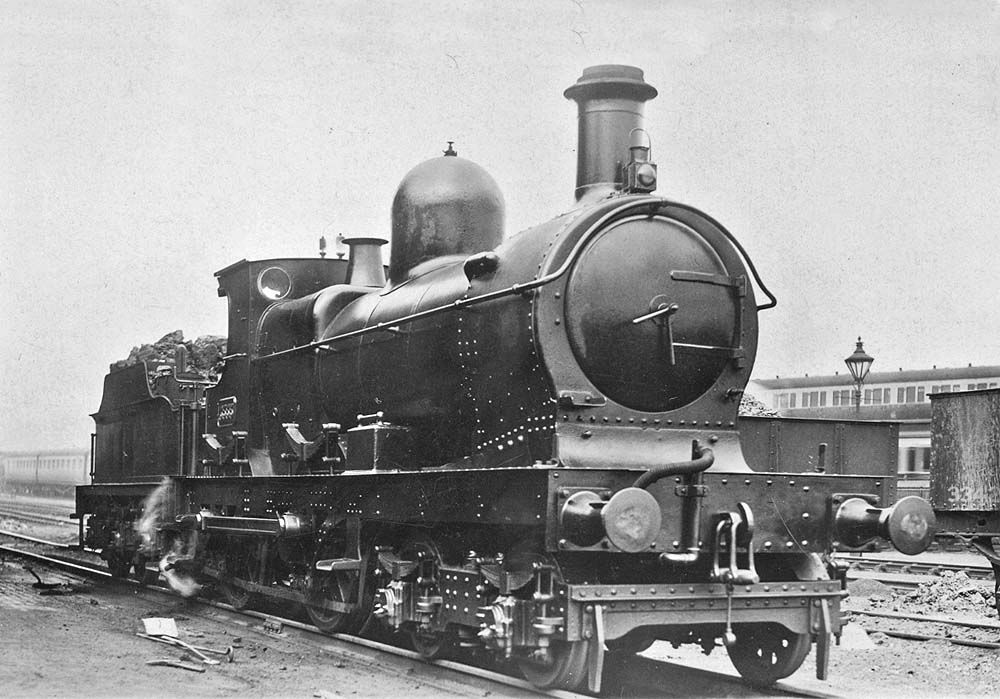|
|
 |
 |
|
GWR Route: Banbury to Wolverhampton
GWR Route: North Warwickshire Line
Tyseley Shed: gwrt2389
 |
GWR 4-4-0 3521 Class No 3555 stands over the ash pits at
Tyseley shed having just been coaled. The 3521 Class started life as a class of
40 tank locomotives designed to haul passenger trains on the Great Western
Railway. They were introduced as 0-4-2T locomotives in 1887, but were quickly
altered to become 0-4-4Ts to improve their running. Following two serious
accidents they were further altered from 1899 to run as 4-4-0 tender
locomotives, in which form the last was withdrawn in 1934. The class were
designed to accommodate both gauges with the first twenty locomotives being
turned out in 1887 as 0-4-2T locomotives for services on the standard gauge
lines with the remaining 20 locomotives being shopped in 1888 but as 0-4-2ST
saddle tanks for the broad gauge lines in Devon and Cornwall. Due to the
unsteady running of the 0-4-2STs, the last of the order, No 3660, was turned
out in August 1889 as a 0-4-4T bogie side tank. The remainder of the class were
altered to a similar layout over the following two years.
The standard gauge 0-4-2Ts were converted to 0-4-4Ts in the
same manner as the broad gauge locomotives, which were all eventually converted
to standard gauge. By the end of 1892 the whole class of forty locomotives was
to one standard design for the first time. On 13th April 1895 No 3521 and No
3546 derailed near Bodmin Road. Three years later another of the class, No
3542, derailed at Penryn and rolled down an embankment, killing the driver.
Following this the whole class was rebuilt as 4-4-0 locomotives. All forty
0-4-4T locomotives were rebuilt as 4-4-0 tender locomotives between 1899 and
1902. Two locomotives, No 3521 and No 3546, were transferred to the Cambrian
Railway in 1921 to replace locomotives destroyed in the Abermule accident. They
were allocated Cambrian numbers No 82 and No 95 respectively but these were
never carried, the two locomotives being returned to the Great Western Railway
with their original numbers when the two railways were grouped together in
1922.
An original photograph by WH Whitworth
 back back

|
|
|
